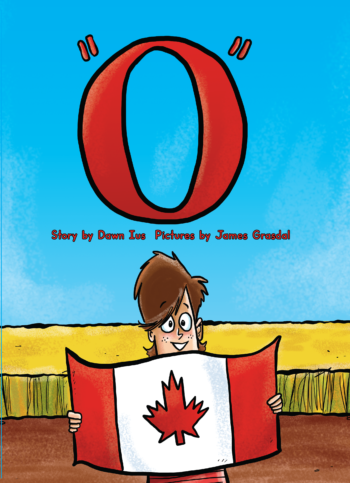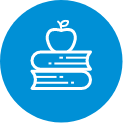
Grade 3 Learning Objectives for “O”
Jump to Subject

English Language Arts
General Learning Objective
1. Students will listen, speak, read, write, view and represent to explore thoughts, ideas, feelings and experiences.
Specific Learning Objectives
1.1 Discover and explore
Express ideas and develop understanding
- Connect prior knowledge and personal experiences with new ideas and information in oral, print and other media texts
- Explain understanding of new concepts in own words
- Explore ideas and feelings by asking questions, talking to others and referring to oral, print and other media texts
1.2 Clarify and Extend
Consider the ideas of others
- Ask for the ideas and observations of others to explore and clarify personal understanding
Extend understanding
- Ask questions to clarify information and ensure understanding
General Learning Objective
2. Students will listen, speak, read, write, view and represent to comprehend and respond personally and critically to oral, print and other media texts.
Specific Learning Objectives
2.1 Use Strategies and Cues
Use prior knowledge
- Share ideas developed through interests, experiences and discussion that are related to new ideas and information
- Identify the different ways in which oral, print and other media texts, such as stories, textbooks, letters, pictionaries and junior dictionaries, are organized, and use them to construct and confirm meaning
Use comprehension strategies
- Use grammatical knowledge to predict words and sentence structures when reading narrative and expository materials
- Apply a variety of strategies, such as setting a purpose, confirming predictions, making inferences and drawing conclusions
- Identify the main idea or topic and supporting details in simple narrative and expository passages
- Extend sight vocabulary to include predictable phrases and words related to language use
- Read silently with increasing confidence and accuracy
- Monitor and confirm meaning by rereading when necessary, and by applying knowledge of pragmatic, semantic, syntactic and graphophonic cueing systems
Use textual cues
- Use headings, paragraphs, punctuation and quotation marks to assist with constructing and confirming meaning
- Attend to and use knowledge of capitalization, commas in a series, question marks, exclamation marks and quotation marks to read accurately, fluently and with comprehension during oral and silent reading
Use phonics and structural analysis
- Apply phonic rules and generalizations competently and confidently to read unfamiliar words in context
- Apply word analysis strategies to segment words into parts or syllables, when reading unfamiliar words in context
- Associate sounds with an increasing number of vowel combinations, consonant blends and digraphs, and letter clusters to read unfamiliar words in context
2.2 Respond to Texts
Experience various texts
- Choose a variety of oral, print and other media texts for shared and independent listening, reading and viewing experiences, using texts from a variety of cultural traditions and genres, such as nonfiction, chapter books, illustrated storybooks, drum dances, fables, CDROM programs and plays
- Tell or write about favourite parts of oral, print and other media texts
- Identify types of literature, such as humour, poetry, adventure and fairy tales, and describe favourites
- Connect own experiences with the experiences of individuals portrayed in oral, print and other media texts, using textual references
Construct meaning from texts
- Connect portrayals of characters or situations in oral, print and other media texts to personal and classroom experiences
- Summarize the main idea of individual oral, print and other media texts
- Discuss, represent or write about ideas in oral, print and other media texts, and relate them to own ideas and experiences and to other texts
- Make inferences about a character’s actions or feelings
- Express preferences for one character over another
2.3 Understand Forms, Elements and Techniques
Understand forms and genres
- Identify distinguishing features of a variety of oral, print and other media texts
- Discuss ways that visual images convey meaning in print and other media texts
Understand techniques and elements
- Include events, setting and characters when summarizing or retelling oral, print or other media texts
- Describe the main characters in terms of who they are, their actions in the story and their relations with other characters
- Identify ways that messages are enhanced in oral, print and other media texts by the use of specific techniques
General Learning Objective
3. Students will listen, speak, read, write, view and represent to manage ideas and information.
Specific Learning Objectives
3.1 Plan and Focus
Focus attention
- Identify facts and opinions, main ideas and details in oral, print and other media texts
3.2 Select and Process
Use a variety of sources
- Find information to answer research questions, using a variety of sources, such as children’s magazines, CDROMs, plays, folk tales, songs, stories and the environment
Access information
- Use text features, such as titles, pictures, headings, labels, diagrams and dictionary guide words, to access information
- Locate answers to questions and extract appropriate and significant information from oral, print and other media texts
3.3 Organize, Record and Evaluate
Record information
- Record facts and ideas using a variety of strategies; list titles and authors of sources
- List significant ideas and information from oral, print and other media texts
3.4 Share and Review
Share ideas and information
- Organize and share ideas and information on topics to engage familiar audiences
General Learning Objective
4. Students will listen, speak, read, write, view and represent to enhance the clarity and artistry of communication
Specific Learning Objectives
4.1 Enhance and Improve
Expand knowledge of language
- Explain relationships among words and concepts associated with topics of study
4.3 Present and Share
Demonstrate attentive listening and viewing
- Rephrase, restate and explain the meaning of oral and visual presentations
- Identify and set purposes for listening and viewing
General Learning Objective
5. Students will listen, speak, read, write, view and represent to respect, support and collaborate with others.
Specific Learning Objectives
5.1 Respect Others and Strengthen Community
Appreciate diversity
- Retell, paraphrase or explain ideas in oral, print and other media texts

Health
Topic: Personal Health
General Learning Objective
Wellness Choices
Students will make responsible and informed choices to maintain health and to promote safety for self and others.
Specific Learning Objectives
W–3.2
- Improve and practise positive health habits; e.g., lifting and carrying book bags/ backpacks, maintaining good posture
W–3.5
- Apply guidelines from Canada’s Food Guide to Healthy Eating to individual nutritional circumstances; e.g., active children eat/drink more
Topic: Life Roles and Career Development
General Learning Objective
Life Learning Choices
Students will use resources effectively to manage and explore life roles and career opportunities
and challenges.
Specific Learning Objectives
L–3.5
- Examine personal skills and assets; e.g., physical, verbal, intellectual

Science
General Learning Objective
3–4 Demonstrate positive attitudes for the study of science and for the application of science in responsible ways.
Specific Learning Objectives
Students will show growth in acquiring and applying the following traits:
- Curiosity
- Confidence in personal ability to explore materials and learn by direct study
- A willingness to work with others in shared activities and in sharing of experiences
- Appreciation of the benefits gained from shared effort and cooperation
- Respect for living things and environments, and commitment for their care.
